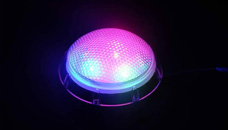Lamp
-
-
Led toxic and harmful substances detection
CTS
One stop testing and certification service in all fields
24-hour service line: +86-139 2959 4349
Switchboard: +86-0769-2236 0704
Email: Peter@cts -cn. com
Basic introduction
In the 21st century, as the greenest and energy-saving light source, LED has been replacing the traditional light source and becoming the protagonist of lighting appliances. In addition to energy conservation considerations, environmental protection requirements are also one of the priorities of this century. Do LED lamps use environmentally friendly materials? Is the material harmful to people and the environment? This is another major issue we are facing.
Restriction of hazardous substances
a. EU ROHS directive
EU: Directive 2011/65/EU of the European Parliament and of theCouncil of 8 June 2011 on the Restriction of the use of Certain Hazardous Substances in Electrical and Electronic equipment, i.e. EURoHS directive
b. California RoHS regulations
US California: Restrictions on the use of Certain HazardousSubstances in Electronic Devices, i.e. California RoHS, Health and Safety Code section 25214.9-25214.10.2
c. United States Federal RoHS act
US: Environmental Design of Electrical Equipment (EDEE) Act, i.e. USRoHS H.R.2420
In the above act, the content of the following six restricted substances in various homogeneous materials in LED lamps is controlled:
Lead: 1000ppm, cadmium: 100ppm, mercury: 1000ppm, hexavalent chromium: 1000ppm, polybrominated biphenyls: 1000ppm, polybrominated diphenyl ethers: 1000ppm
EU ROHS recommends priority of four substances
a. Three phthalates (BBP, DBP and DEHP)
b. Hexabromocyclododecane hbcdd
EU regulations on registration, evaluation, authorization and restricted use of chemicals
EU Regulation (EC) No 1907/2006 of theEuropean Parliament and of the Council of 18 December 2006 concerning theRegistration,Evaluation,Authorization and Restriction of Chemicals (REACH)
a. List of authorized candidate substances
144 substances of high concern 144 (SVHC)
b. List of the restricted substances, annex XVII
Some relevant test items are listed below
Ⅰ. No. 1 Polychlorinated terphenyls (PCTs)
Ⅱ. No. 20 Organotin compounds
Ⅲ. No. 23 cadmium
Ⅳ. No. 42 Short chain chlorinated paraffin
Ⅴ. No. 46 Nonylphenol and nonylphenol ethoxyl ether
Ⅵ. No. 50 Multi exchange aromatic hydrocarbon (PAH)
EU persistent organic pollutants regulation
EU Regulation (EC) No 850/2004 of theEuropean Parliament and of the Council of 29 April 2004on Persistent Organic Pollutants
Some related test items listed as below
a. Perfluorooctane sulfonic acid and its derivatives (PFOS)
b. Polychlorinated biphenyls (PCB)
18 polycyclic aromatic hydrocarbons 18 PAHs requested by GS certificate


